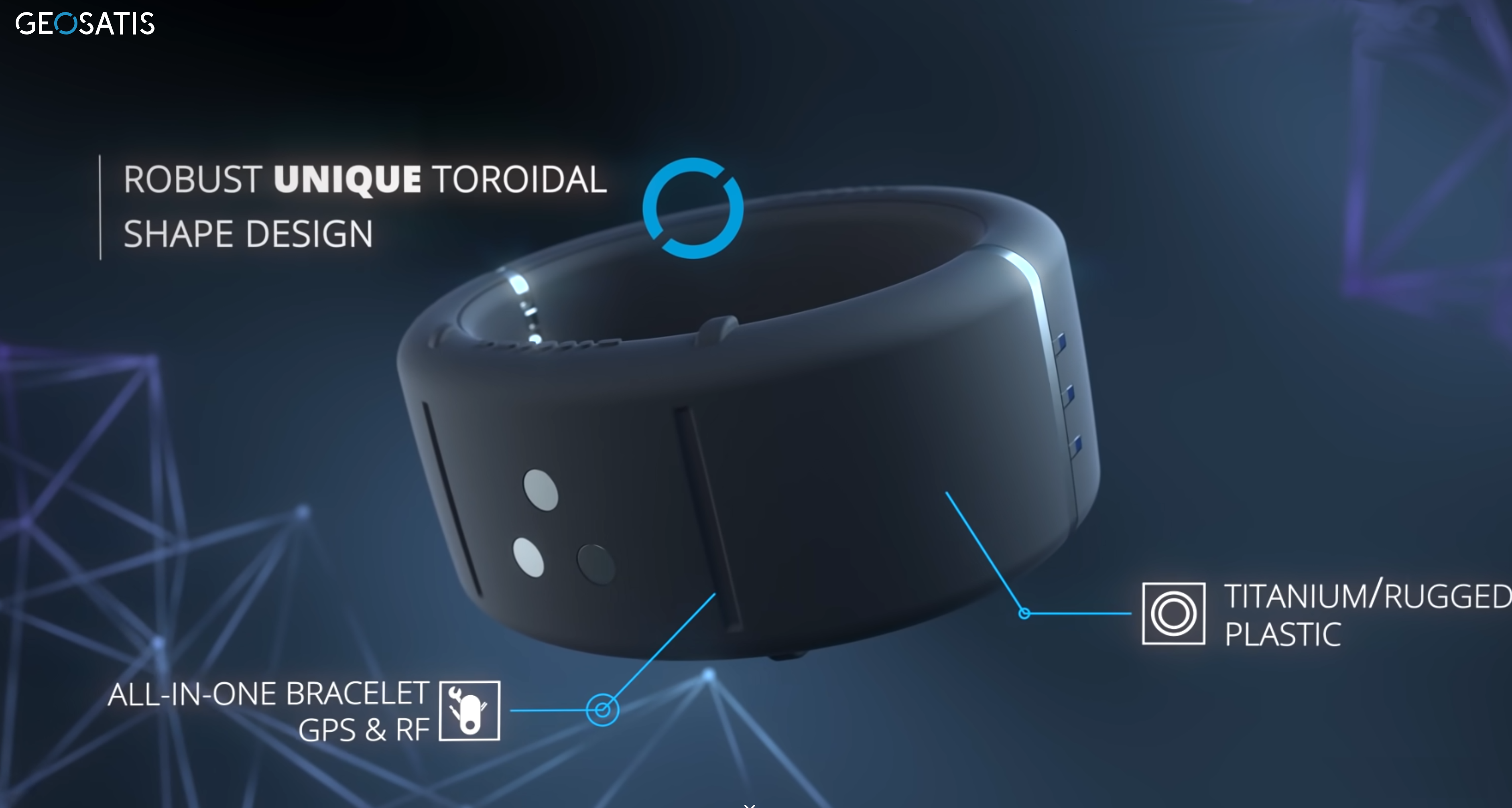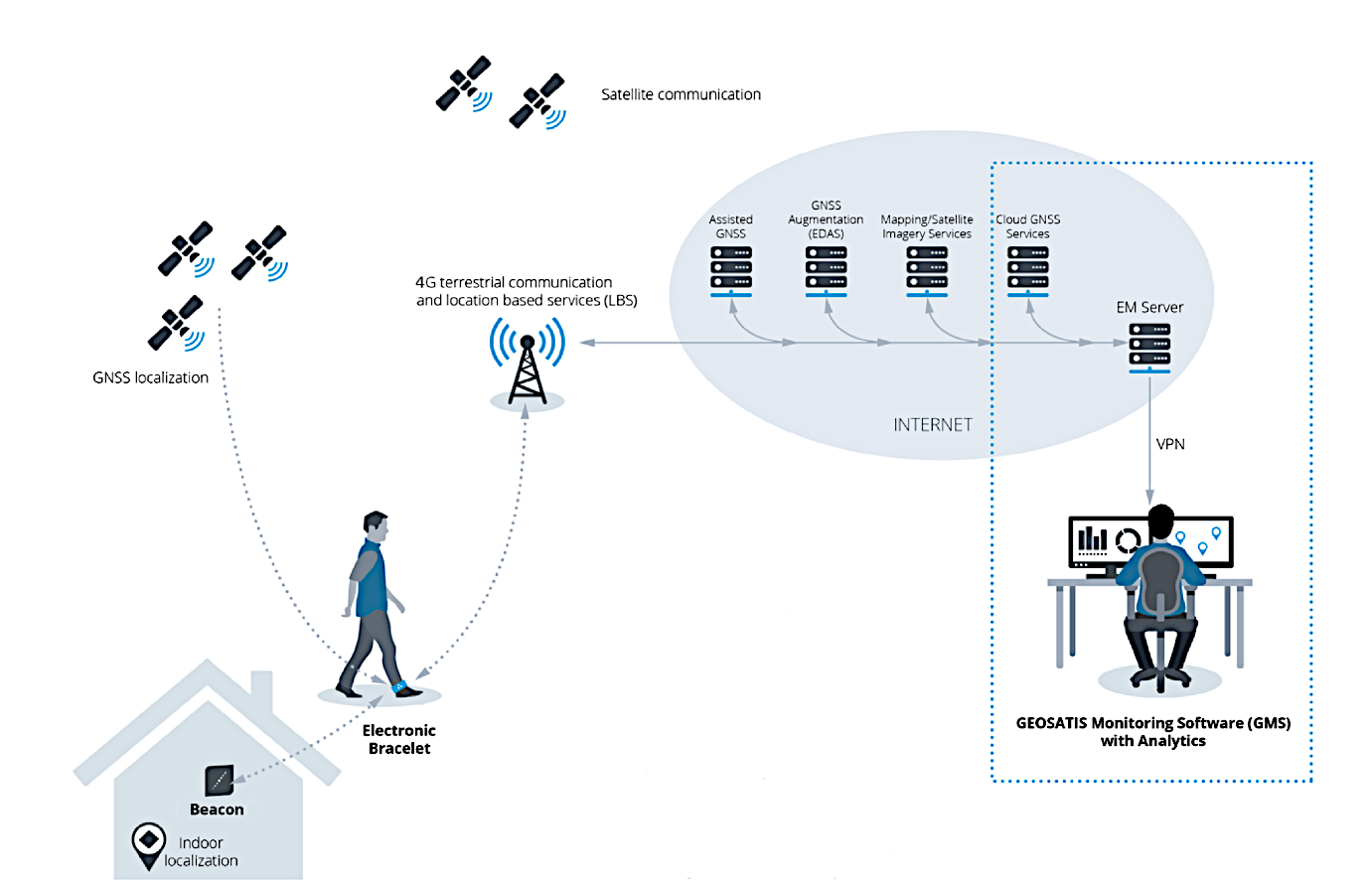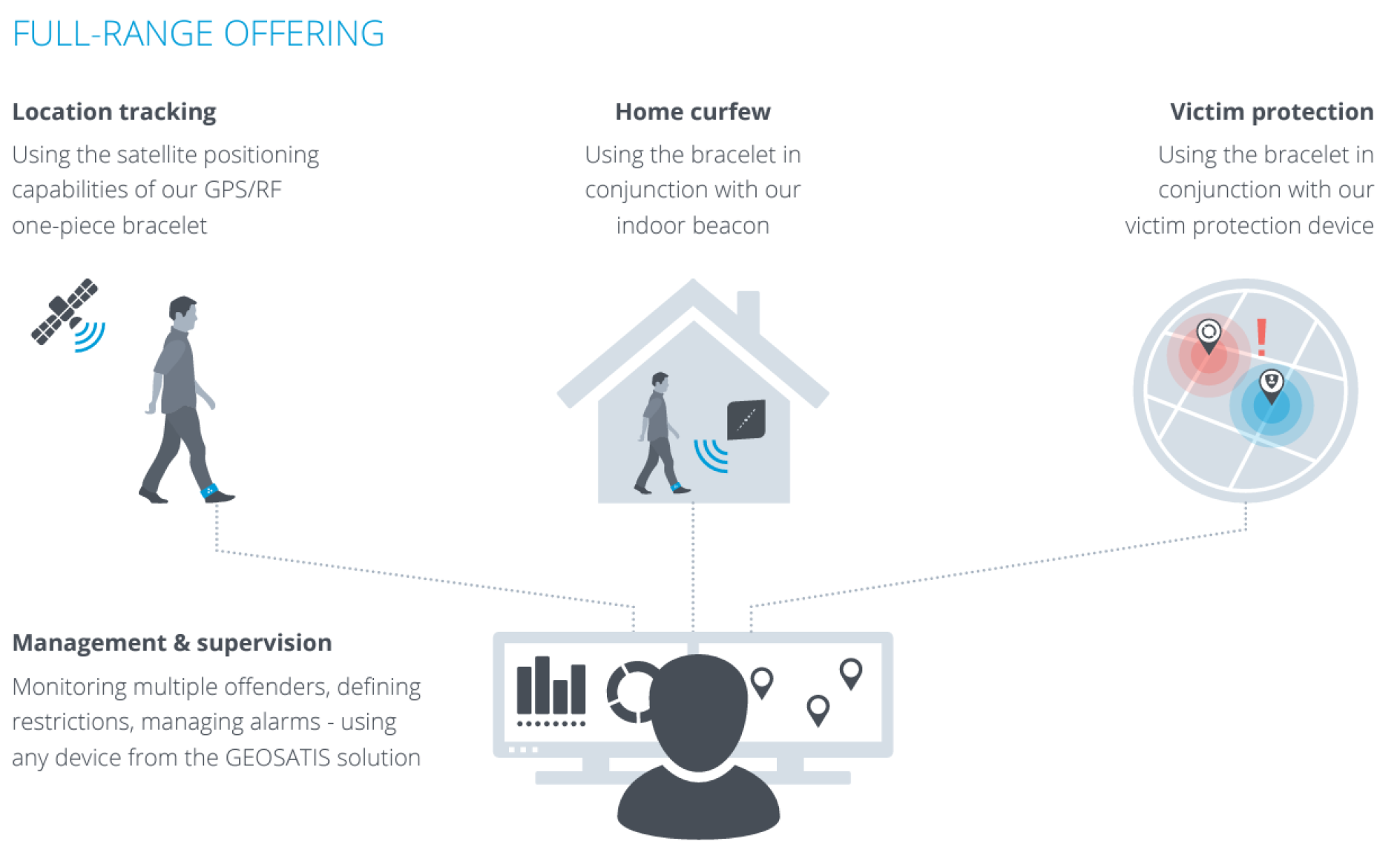
Objectives of the service
-
Levelling the system security with the mechanical robustness of the GEOSATIS bracelet by using satellite technology complemented by terrestrial aids;
-
Increasing the localisation precision and availability of the bracelet both outdoors and indoors, implementing new localisation and communication technologies in GEOSATIS hardware;
-
The proposed system/services are now based on improved versions of the GEOSATIS EM Bracelet and Beacon hardware, as well as of the GEOSATIS Monitoring Software (GMS). These new products feature:
-
More precise, secure and available GNSS satellite navigation complemented with terrestrial aids;
-
More secure and higher availability communications
-
Further improved mechanical robustness and ease of installation.

Users and their needs
The main customers targeted by the EM proposed system/service are the governmental bodies responsible for:
-
Probation institutions;
-
Prisons; and
-
Police.
These clients operate in a country-wide or regional area. The market traditionally relies on RF-only systems that have low localisation quality and high security risks. Following several legal framework changes, increased user education and extended availability of GPS products, the market for GNSS-based solutions is opening and a large business opportunity is foreseen.
The user needs with respect to EM services cover various aspects of the service but, with respect to this project and space assets, the most important needs are:
-
Localisation precision and availability: the cornerstones of the service are good localisation availability and high localisation precision. Indeed, one of the main complaints about current EM systems are false alarms caused by poor or missing location information. Availability encompasses the localisation technology itself but also the communication to the EM platform and its effective treatment and display using accurate mapping and imaging data.
-
Localisation integrity/security: It is crucial that the localisation procedure must ensure location integrity both in face of benign failures as well as deliberate attacks both indoors and outdoors.
-
Usable and efficient monitoring: for EM to be cost-efficient, the monitoring platform must allow each operator to manage a high number of offenders.
-
Non-dependence on military systems: Some clients have expressed issues about relying on military-purpose systems, such as GPS and GLONASS, especially because they are under control of foreign states.
-
Flexibility: The service will be provided in many countries and to many different users, all with slightly different requirements.
Worldwide: EM is now very prominent in North America, South America, Europe, Africa, Australia and the Middle-East.
Service/ system concept
The general GEOSATIS EM system/service architecture is presented in the figure below. The bracelet obtains its location from multiple GNSS services, including Galileo, and relays it, along with status and possible alarms, to the EM server. This is done through a terrestrial communication operator, such as a cellular network, that also allows the EM server to provide various instructions to the bracelet and the usage of assisted GNSS and GNSS augmentation. To complement GNSS, the bracelets can obtain their location via terrestrial localization services. This project will provide improvements to all these technologies and evaluate the feasibility of including satellite communications in the system.
If in range, the bracelet establishes a wireless link with the beacon. This link serves both as a means of indoor localisation (the bracelet is in the proximity of the beacon, whose location is known), as well as an alternative means of communication (the beacon acts as a relay between the bracelet and the EM server).
The monitoring platform is connected to the EM server. The information provided by the bracelets and the beacons is pre-processed by the EM server and forwarded to the monitoring platform. The monitoring platform in turn analyses this information, presents it to the operator, and sends instructions to the devices via the EM server when required. The EM server also obtains data from external services, most notably maps and satellite images.

Space Added Value
-
Improved GNSS: using alternative GNSS will yield higher quality of service: better availability and higher precision, as well as improved integrity/security. This will also enhance and support the victim protection system. Otherwise, there is a good chance that the victim is in proximity of the offender, and the system does not accurately or precisely pick that due to weak or no GNSS.
-
Satellite communications: the project evaluated the feasibility of including satellite communications in the system/service and this is proceeding to an implementation. Distribution of signals from one point to many locations (point-to-multipoint/broadcasting), ensures coverage of the bracelet, over a larger geographical area. The bracelet can be used for sparsely populated areas too. Using a higher bandwidth, wireless and mobile communication applications can be easily established independent of location. This will also help the victim application perform better.
-
Space cartography and satellite imagery: part of the reliability of an EM solution is based on the accuracy of the digital maps/satellite images used in the monitoring platform. This can give more accurate details of the offender or the victim or their interaction.
Current Status

The project is finished. Geosatis is happy to report that we have delivered nine major software upgrades (GMS 3.17), and 38 minor upgrades. There was one major hardware upgrade from Version 5 to 6 (main focus during the demonstration project), and various minor upgrades. The base station was completely converted into Beacon and both the technology, utility, and functionality were further enhanced. Geosatis now has a complete new set of customers including Mississippi.
The current software version (3.17.0) includes the following improvements:
-
Multiple time zone support
-
IRIS General support
-
Reports: Multiple processing updates
-
Prevention of Role Escalation
-
Close multiple alarms conveniently
-
Login history pagination
The current hardware version (V6) includes the following improvements:
-
Battery infinite charge and permanent fail error/issue resolved
-
Sleep mode improvements
-
Mechanical improvements on screw and sim adjustments
-
Improved battery capacity
-
4G (LTE Cat.M1)
-
Mobile charger serial number was not displayed
-
Tampering alarms SMS notifications
-
Schedules modification bug fixes



